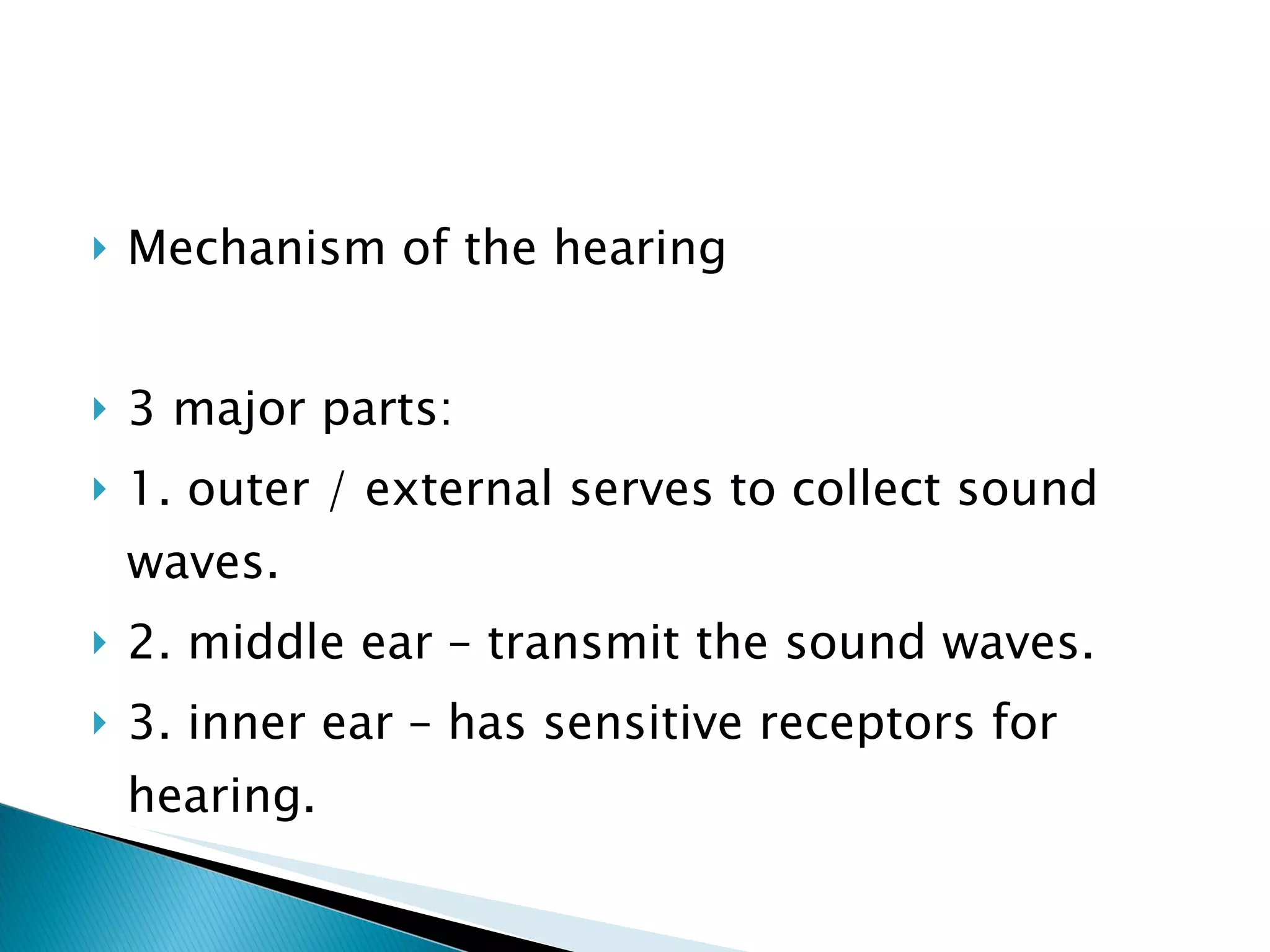The document discusses the process of sensation, highlighting the three essential conditions for sensing stimuli: stimulation of sensory organs, presence of receptor cells, and the transduction of stimuli into electrochemical impulses for the brain. It elaborates on various senses, including vision and audition, detailing their mechanisms, components, and related visual defects. Additionally, it covers olfaction and gustation, emphasizing the importance of chemical substances in the processes of smell and taste.




































